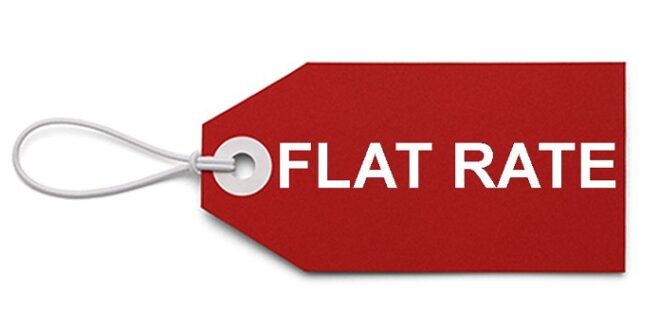Trades businesses usually offer quotations or charge flat rates for their services. There are several benefits to both financial models, as well as certain drawbacks. Your trades business can choose which charging model suits you by getting a better understanding of how you operate.
If you offer a quote, then the price can change later on. However, this can make the customers unhappy. A flat rate is an all-inclusive price model, so the customer knows what they’re getting into. Aside from the customer, you also need to consider your earnings and profit as well. Another way for your trades business to benefit is with tradie insurance. Learn how insurance for tradies can bring benefits to your trades business.
So which is better? Quoting or charging a flat rate?
The Difference Between Quoting and Charging a Flat Rate
When you offer a quote, you inform the customer of the final price they can expect for your professional service. Quotes are provided after the project is assessed and all costs are taken into consideration. Despite this, price changes may still happen. Say the client wants to make changes to the project, or you need more raw materials.
A quote gives you the flexibility to adjust your price depending on potential changes to the project and workflow. When you charge a flat rate, however, this option isn’t available to you.
A flat rate is a final price that the customer has to pay. There won’t be any changes to this price, even in case of delays or drawbacks. While this sounds appealing to customers, as they don’t have to expect the price to change, it can affect your trades business.
Where long-term projects or projects with expected delays are involved, charging a flat rate may affect your profit. For short-term projects or easy repair jobs, flat rates are ideal.
Charging Flat Rates vs Providing Quotations
For trades businesses, you need to ensure that the effort you’re putting into your work is reflecting in your earnings. If you aren’t making a profit, then your trades business can’t grow. Here are the things you should know about charging a flat rate vs providing a quote.
-
Time Investment
Providing a quote involves visiting the work location, assessing the work that needs to be done, and then providing an estimated cost to the client. This involves transportation costs, as well as the time investment required to visit the location and provide the quote.
If you charge a flat rate, however, these costs are removed. You can directly provide your pricing information to the client over the phone, or even during the job. A flat rate is great for simple jobs or short-term projects. For more complicated work, providing a quote is the better pricing strategy.
-
Project Extensions and Delays
It isn’t always possible for a trades business to complete every project in time. Scenarios such as availability of raw materials, weather-related issues, a client wanting changes, and more, can affect how long it takes to complete the project.
In these situations, providing a quote can help you recover all the costs that the project extension generated. A flat rate, however, means that the client doesn’t have to pay anything extra. In this case, you can’t charge them for any extra costs incurred during the project delivery.
Simple jobs or work that takes less than a day to complete are better suited to flat rates.
-
Value for Money
Some clients may prefer a flat rate. This is as they know exactly how much they have to pay. Projects can become far more expensive than was originally expected. When you charge a flat rate, both you and your client can better stay within budget.
Providing a quotation, on the other hand, gives both you and your client the opportunity to be flexible. Changes to the project as well as unexpected delays won’t affect your earnings either.
Also Read: Know everything about Kissanime
Conclusion
Both providing quotes and charging flat rates have their own benefits, especially depending on the kind of project. You can consider using both in your trade business. By choosing how to price your services depending on the kind of project, both you and your client stand to benefit.
 HammBurg Be informed with latest news, reviews, entertainment, lifestyle tips, and much more.
HammBurg Be informed with latest news, reviews, entertainment, lifestyle tips, and much more.




